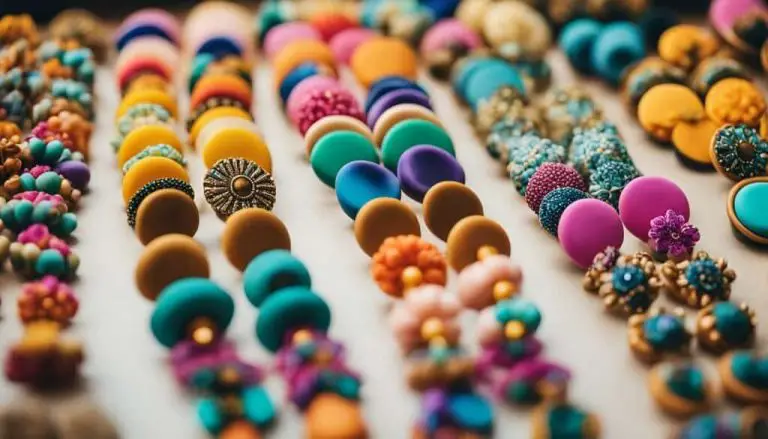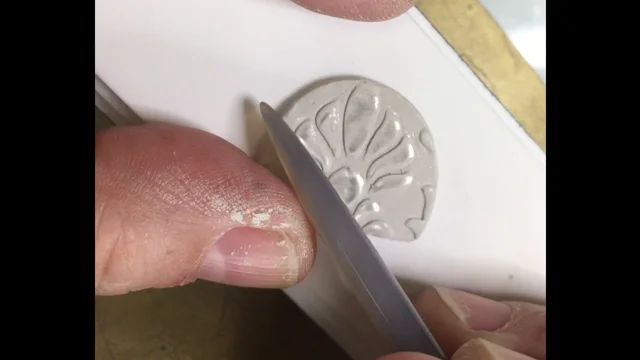Which Air Dry Clay Is Best For Jewellery Making?
Air dry clays are a versatile modeling material used by jewelry makers, crafters and artists to handcraft lightweight, durable items. Unlike traditional clays that require firing in a kiln, air dry clays cure and harden at room temperature just by leaving them out to dry.
There are several types of air dry clays to choose from, each with their own properties and characteristics. Polymer-based clays are smooth, flexible and strong. Earthen clays made from natural ingredients create an organic, earthy look. Paper clays allow very fine detail work. All types of air dry clay can be sanded, carved, drilled and painted once dry.
When cured, air dry clays make an excellent base material for jewelry and accessories. They can be formed into beads, pendants, focal pieces and more. The lightweight nature of air dry clay ensures completed pieces are comfortable to wear. With proper sealing, jewelry made from air dry clay can even be worn in water.
This article will discuss the top options for air dry clays and their suitability for jewelry making and design.
Types of Air Dry Clays
There are three main types of air dry clays that work well for jewelry making:
Polymer Clays
Polymer clays are made from PVC resin and a liquid plasticizer which allows the clay to be flexible and moldable. Popular brands of polymer clay include Sculpey and Fimo. Polymer clays air dry by curing in a regular oven at relatively low temperatures. They result in durable, lightweight finished pieces.
Earthen Clays
Earthen clays are natural clays dug from the earth that have been refined and processed to remove impurities. They air dry naturally by evaporating water content. Popular brands include Amaco’s Air Dry Clay and Activa’s Air Dry Clay. Finished pieces have an earthy, organic look.
Paper Clays
Paper clays contain cellulose fiber from natural plant sources blended with refined clay. The plant fibers give more strength and structure as the clay air dries. Popular options are Hearty Clay and Paperclay. Paper clays are lightweight and easy to sand and carve.
Key Properties to Look For
When selecting an air dry clay for jewelry making, there are four key properties to evaluate:
Strength
The clay needs to be strong enough to withstand being worn daily without cracking or breaking. Fragile clays won’t hold up over time. Look for clays that advertise high strength and durability.
Durability
Similar to strength, the clay must be able to stand up to constant wear without deteriorating. Durability ensures your jewelry will last. Avoid clays that are prone to crumbling or flaking off.
Flexibility
Flexibility allows you to bend and shape the clay without cracking it. The clay should be pliable enough to form intricate shapes but firm enough to hold its form once dry. Highly flexible clays produce flowing designs.
Finishing Qualities
The clay’s finishing is important for achieving a smooth, professional look. Sanded and buffed clays take on a nice sheen. Clays that crack easily or have poor sanding properties will look homemade no matter your skill level.
Recommended Brands
When it comes to the top air dry clay brands for jewelry making, here are some of the most popular options to consider:
Sculpey
Sculpey is one of the leading brands when it comes to polymer modeling clays. Their clays are available in a wide range of colors and finishes.
Pros: Easy to work with, bakes hard and durable, vibrant colors, multiple finishes available.
Cons: Can be prone to fingerprints and smudges if not sealed properly. Need to bake finished pieces in the oven.
Crayola Air Dry Clay
Crayola offers an affordable, non-toxic air dry modeling clay that is great for beginners and kids. It air dries to a sturdy finish within 24 hours.
Pros: Inexpensive, quick drying time, non-toxic, variety of colors.
Cons: Can crack if pieces are too thick. Limited color palette. Lower durability than polymer clays.
Hearty Clay
Hearty Clay is a premium air dry polymer clay that creates durable, professional results. It’s smooth texture makes it ideal for detailed jewelry pieces.
Pros: Very strong when dry, takes fine details well, dries to a porcelain-like finish, non-toxic.
Cons: More expensive than other clays, can be heavy in large pieces.
Polymer Clays
Polymer clays such as Sculpey and Fimo are some of the most popular brands for jewelry making. They consist of PVC resins and plasticizers which bind together when baked according to package instructions. Polymer clays have several benefits that make them ideal for jewelry:
Workability – Polymer clays are easy to condition and smooth. Their texture is malleable, similar to ceramic clay before firing. They don’t dry out quickly while working with them.
Detail – The plasticity of polymer clays allows for intricate shapes, patterns and textures. Fine details like fingerprints, textures and cutouts can be achieved.
Strength – Once cured in a home oven, polymer clay becomes durable plastic. Pieces made from Sculpey and Fimo can withstand daily wear without chipping or cracking.
Color Options – Polymer clays come in every color imaginable. Sculpey and Fimo have dozens of colors to choose from, with special effects clays like translucent, pearlized, metallic and glow-in-the dark.
While polymer clays offer many benefits, there are some drawbacks to consider:
Shrinkage – Polymer clays can shrink up to 13% from conditioning to cured state. Keeping clay thickness even can prevent warping.
Heat Sensitivity – Baked polymer clay jewelry is sensitive to heat. Prolonged exposure to temperatures over 100°C can cause softening and warping.
Weight – Polymer clays are heavier than earthen clays. Large or bulky pieces may be too heavy for jewelry.
Overall, the wide selection of colors, flexibility and durability make polymer clays a top choice for jewelry making. Brands like Sculpey and Fimo allow endless creative possibilities.
Earthen Clays
Earthen clays like pottery or terracotta clay are one of the most widely available and affordable options for jewelry making. These air dry clays are composed of natural earthen materials like clay and organic binders. They have an earthy texture and warm terracotta color when cured.
The key benefits of earthen clays are that they are very inexpensive, widely accessible even in arts and crafts stores, and easy to work with for handbuilding techniques. Their natural composition gives jewelry made with these clays an organic, homemade look. Earthen clays are also quite strong and durable once fully cured.
The main drawbacks are that earthen clays take longer to fully cure compared to other clays, often requiring a week or more to reach maximum hardness. They also tend to be quite porous and fragile before sealing, so jewelry pieces must be handled carefully. Earthen clays can only be used for handbuilding techniques – not extrusion or molding. And their colors are limited to natural earthen hues unless painted.
Paper Clays
Paper clays are made from cellulose fiber, often recycled paper. Two common brands are Celluclay and Activa Paperclay.
Benefits:
- Lightweight and easy to work with
- Good for adding paper texture effects
- Can be drilled, cut, sanded, and carved when dry
- Non-toxic and low odor
Drawbacks:
- Less durable than polymer or earthen clays
- Can crack if too thin
- Requires sealing for prolonged jewelry use
- Longer drying time than some clays
Both Celluclay and Activa work well for jewelry making. Celluclay is cheaper but more prone to cracking while Activa has a finer texture and is stronger when dry. Paper clays are best suited for decorative and lightweight jewelry components rather than structural pieces.
Finishing and Sealing
Properly finishing and sealing air dry clay pieces is a crucial step before using them in jewelry. Air dry clays are inherently porous, which means they can absorb moisture, oils and dirt over time. Sealing creates a protective barrier that waterproofs the piece and prevents stains. It also provides an attractive smooth finish.
There are several techniques for finishing air dry clay:
- Sanding – Start with a coarse grit sandpaper like 120 grit to smooth seams and shape details. Move up through finer grits like 220, 400, 600 to achieve a smooth finish.
- Buffing – Use a cloth buffing wheel or buffing pad on a rotary tool to polish the surface to a shine.
- Burnishing – Rub the clay surface vigorously with a hard tool like polished stone, steel or glass to compact it into a glossy finish.
When it comes to sealing, there are two main options:
- Acrylic sprays like Sculpey Glaze – Offer a fast-drying clear acrylic coat that protects from moisture and dirt.
- Epoxy resin – Creates a thick, durable, waterproof barrier with a glass-like finish. Best for pieces that will get more wear.
Sealing is a must for jewelry pieces made with air dry clay. The sealed surface prevents degradation over time and provides a polished, professional finish that really makes designs pop. Don’t skip this step after spending time sculpting and detailing your pieces!
Jewelry Design Tips
When working with air dry clays for jewelry, keep these design tips in mind:
Shaping: Roll the clay into coils, slabs or balls. Let it firm up slightly before shaping to avoid fingerprints and smudges. Use silicone molds to easily imprint patterns. Cut shapes using cookie cutters or knives. Attach pieces using water or liquid clay.
Baking: Follow package instructions for baking times and temperatures. Air dry clays cure at much lower temps than polymer clay, usually around 225°F. Baking helps harden and strengthen the clay. Place pieces on a ceramic tile or baking sheet lined with parchment paper.
Glazing: Once fully cured, pieces can be sanded smooth. Apply acrylic glazes in thin layers and bake again to set the glaze. This creates a glossy finish and seals the surface. Glazes come in endless colors and effects like pearl, metallic and glow-in-the-dark.
Conclusion
When it comes to selecting the ideal air dry clay for jewelry making, it really comes down to the type of project and your personal preferences. Polymer clays like Sculpey and FIMO provide smooth finishes and vibrant colors but can be difficult to work with and require sealing. Earthen clays like Makins Clay are natural and eco-friendly but shrink during drying and have earthier hues. Paper clays like Hearty Clay are lightweight and easily molded but may be too delicate for larger pendants.
Overall, polymer clays seem to have the most versatility for detailed jewelry designs and ability to achieve polished finishes. Sculpey is a top choice with a wide assortment of colors and blends and minimal stickiness when conditioning. For beginners, Makins Poly Clay is user-friendly and accessible. When working on a budget, air dry terracotta has potential with proper sealing. Whichever clay type you select, take time to condition it properly, use acrylic rollers and texture tools, and seal thoroughly after drying for durable jewelry that will last.


